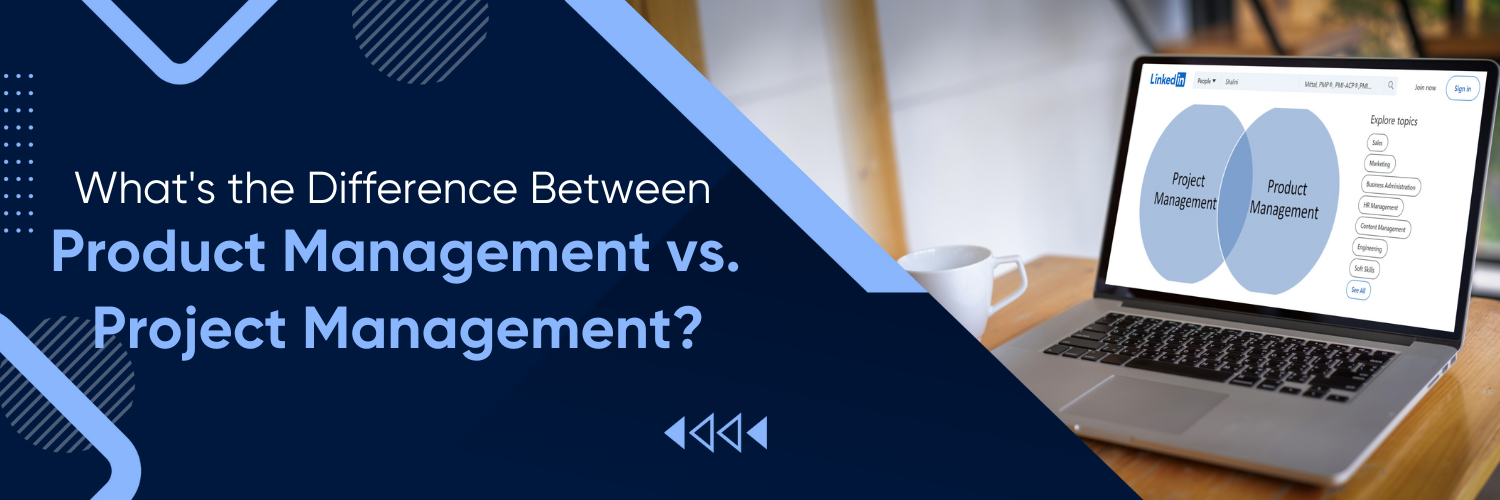Product Management and Project Management
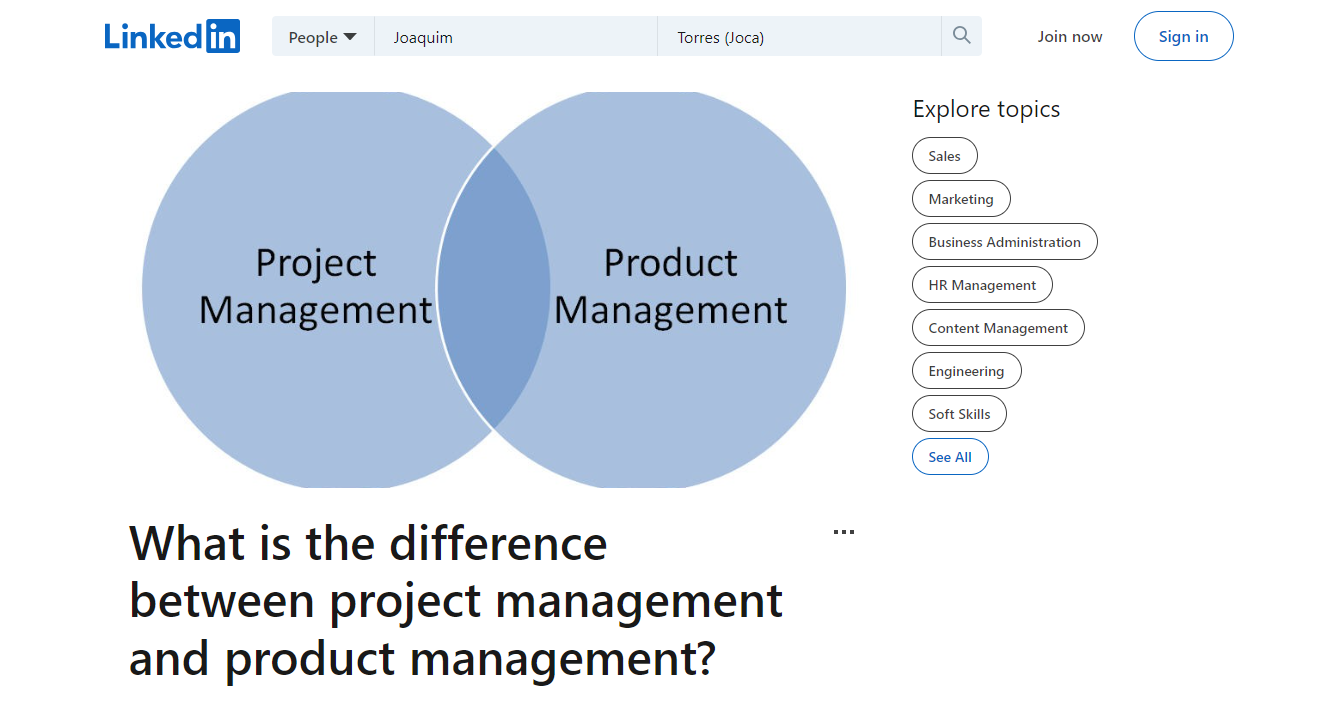
Source: LinkedIn
Product management and project management are two distinct disciplines in the business world, each with its own set of practices and processes. Both require a unique set of skills, and they both play an integral role in ensuring the success of a product or project.
Product managers are tasked with the overall management of a product from its conception to its launch and ongoing maintenance. They are responsible for coordinating and creating product strategy, defining product requirements, and leading a cross-functional team. On the other hand, project managers are in charge of planning, executing, and delivering projects on time and within budget. They are responsible for setting and managing expectations, tracking progress, and making sure the project team has the resources it needs to complete the project.
Project Management, Planning, & Responsibilities

Project management involves the careful coordination and direction of project tasks, from conception to completion. A project manager is tasked with the job of leading and organizing the project, from establishing the project goals and objectives to implementing the project plan and managing the resources required to complete the project. Project management planning includes a wide range of activities such as identifying the project scope and objectives, developing a project timeline, estimating the project budget, and selecting the appropriate personnel and resources.
Responsibilities of a Project Manager

Project managers are responsible for the planning, execution, and completion of a project. They must develop and monitor the project timeline, assign tasks to team members, and ensure that the project runs smoothly and within budget. They also need to identify any risks that may arise during the course of the project and develop strategies to mitigate those risks.
They must be able to lead the team through any obstacles that may arise and adapt the project plan as needed. They must also be able to work with stakeholders to develop an effective project plan and ensure that their goals and objectives are met. Additionally, they must be able to manage and motivate team members, provide feedback, and address any conflicts that may arise.
Project Management Planning
Crafting a comprehensive plan is a critical step in ensuring a project’s successful completion. This plan should include an estimate of the budget, timeline, and resources needed to complete the project. Every detail that could potentially affect the project should be taken into account. This includes risks that could arise, milestones that need to be met, and contingency plans in case of a worst case scenario.
Project management planning is complex and requires careful thought and consideration. It should begin with a detailed outline of the project. Defining the project scope, objectives, and goals is essential. This will provide the groundwork for the project plan. From there, the team should brainstorm and create a timeline, set the budget, and decide on the resources needed to complete the project.
For larger projects, multiple members of the team should work together to plan and strategize the best way to complete the project. Each team member should be familiar with the plan, and each task should be assigned to an individual or team. This helps to ensure that the project is completed on time and on budget. Having a comprehensive plan is key to the success of the project.
What is Product Management?
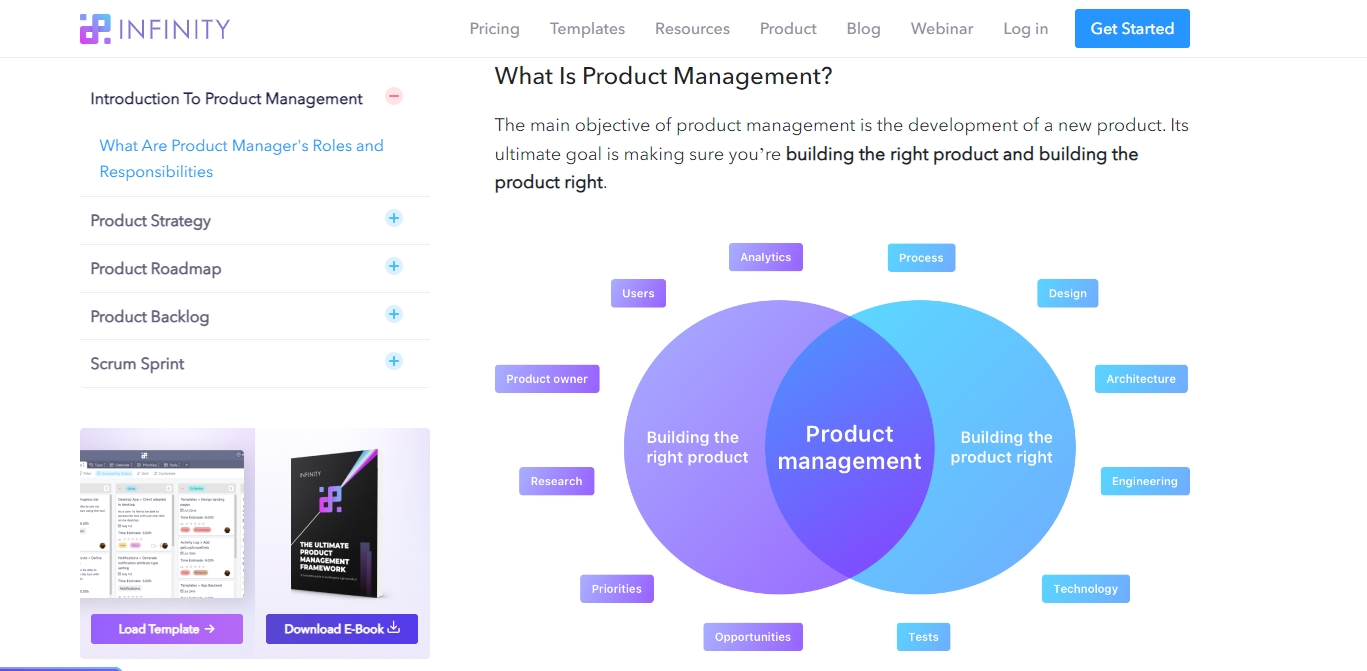
Source: Infinity
Product Management is an integral part of the product development process, requiring careful coordination and collaboration between stakeholders. As the central hub of all product decisions, a Product Manager is responsible for collecting requirements from stakeholders, analyzing consumer data, and creating a product roadmap that meets the needs of the end user. A Product Manager must utilize their expertise in customer research, product strategy, and data analysis to effectively turn business requirements into actionable plans.
Responsibilities of a Product Manager
Product managers are responsible for understanding customer needs, conducting market research, and defining product features. They must also have a deep understanding of the product and be able to communicate the product vision to the development team. Additionally, product managers are responsible for managing the product roadmap, ensuring that the product remains competitive in the market, and coordinating with other departments to ensure proper execution of the product. Product managers must also monitor the product performance in the market and make necessary adjustments to ensure that the product meets its goals.
Requirements Gathering
Requirements gathering is the task of researching and understanding what clients and stakeholders need from a product or service. It is an essential part of the development process, as it allows product managers to identify the objectives and goals that will inform the design and development of the product.
The requirements gathering process consists of three main steps: data collection, analysis, and synthesis.
During the data collection phase, product managers gather information from stakeholders in order to understand the needs of the product. This process involves conducting interviews and surveys, reviewing documents, and gathering feedback from users.
In the analysis phase, product managers review the gathered information in order to identify common themes and objectives. This step helps them to identify potential use cases and user stories.
In the synthesis phase, product managers synthesize the gathered data and use it to create a product roadmap. The product roadmap identifies the scope of the project, the timeline for development, and the resources that will be needed to make the product a reality.
Product Management vs Project Management

Source: Wishdesk
Project and product management differ in their goals, approach, and timelines. A project manager is tasked with delivering a specific outcome within a specified timeframe, while product managers focus on designing and deploying a product. They utilize different strategies to achieve their goals, such as setting up teams, deadlines, and milestones to track progress for a project, while product managers assess customer needs and develop a product roadmap.
Goals
The Project Manager is responsible for ensuring that all activities related to the project are executed on time and within budget. They must also ensure that all stakeholders are kept informed of any changes or updates to the project. In addition, they need to ensure that any potential risks are identified and dealt with swiftly.
On the other hand, Product Managers have more expansive goals. They are responsible for leading a product from concept to launch and beyond. They need to ensure that the product is meeting the needs of customers, is competitive in the marketplace, and is profitable. They must also be adept at managing multiple stakeholders, including product owners, developers, and other teams. Product Managers must also be able to come up with innovative solutions for any issues that arise.
Approach
Project management focuses on a specific goal, and the planning and execution of the project is designed to reach that goal. This requires a detailed approach that focuses on breaking down a large goal into smaller, more manageable tasks. The planning and execution of the project is monitored closely and adjusted as needed, to ensure that the project is completed according to the timeline and budget.
Product management, on the other hand, requires a more broad-based approach. Instead of focusing on a single goal, product managers must consider the ongoing development of the product in terms of its features, customer needs, market trends, and profitability. This requires a focus on both short-term goals and long-term vision. Product managers must create an overall strategy for the product, and then break down that strategy into achievable tasks or goals. Product managers must also be agile in their approach, as the product and the market are constantly changing.
Timelines
Project management timelines are typically much shorter than those of product management. Projects generally have a definitive beginning and end and are completed over a period of days, weeks, or months.
In contrast, product management timelines are often long-term plans, with goals that can take years to achieve. Product managers are responsible for planning out the stages of a product’s evolution over time, ensuring that the product is consistently meeting the needs of its users and remaining competitive in the market.
Advantages of Project Management
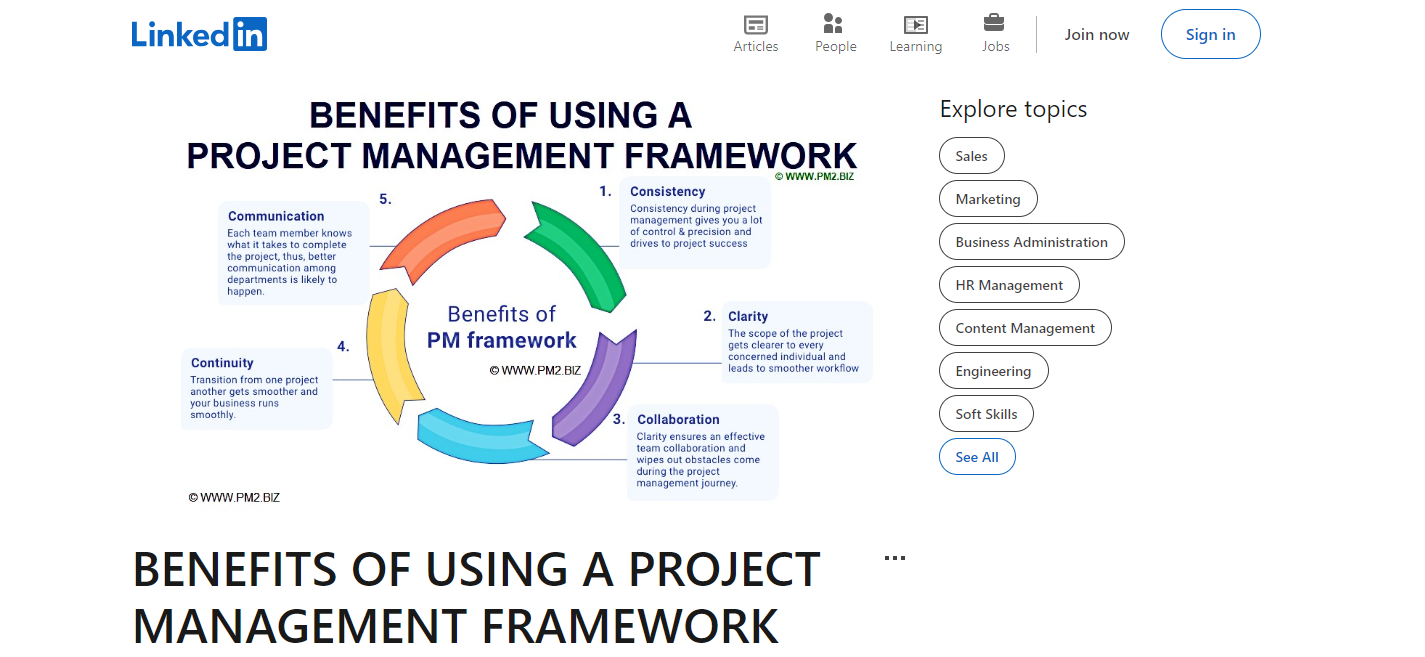
Source: LinkedIn
Ability to Create Unique Products
Building unique products for customers is one of the main advantages of project management. Through this method of management, companies have the ability to create products that offer their customers something new and exciting. By using project management, businesses can take on a more creative approach to product creation that allows them to design products that are tailored to the needs of their customers. With this approach, companies can create products that are unique to their business and offer something that their competitors do not.
Project management also allows a company to maximize its resources and minimize costs. By breaking down a product into smaller, more manageable tasks, a company can identify areas where the product could be improved or changed to better meet the needs of their customers. By taking this approach, companies can create products that are innovative and cost-effective, allowing them to stay competitive in the marketplace.
Ability to Meet Customer Needs
Project management provides the necessary tools to ensure the needs of customers are met. By properly identifying customer needs and applying the right project techniques, project managers can develop strategies to meet customer demands. This process begins by researching the customer’s current situation, understanding what they want, and then creating solutions that meet their needs.
Project managers use a variety of methods to ensure customer needs are met. They establish detailed plans, set goals, and create timelines that ensure the project meets specific requirements. They also use communication techniques to ensure all members of the project team are on the same page and that their ideas are heard. Furthermore, project managers are responsible for reporting on the project’s progress, so customers can see the project is making progress and that their needs are being addressed.
Increased Efficiency
The advantages of project management become even more evident when looking at increased efficiency. Through the implementation of project management principles, it is possible to create processes that are highly efficient and provide maximum benefit to the organization. By utilizing project management tools such as task lists, timelines, and resource allocations, it is possible to streamline the project from start to finish. This leads to improved productivity and reduced costs, both of which are essential to any organization’s success. Additionally, project management can help to ensure that all stakeholders are on the same page, allowing for faster decision-making and more accurate estimation of the time and resources required to complete a task. All of these benefits lead to improved efficiency and ultimately more success for the organization.
Advantages of Product Management
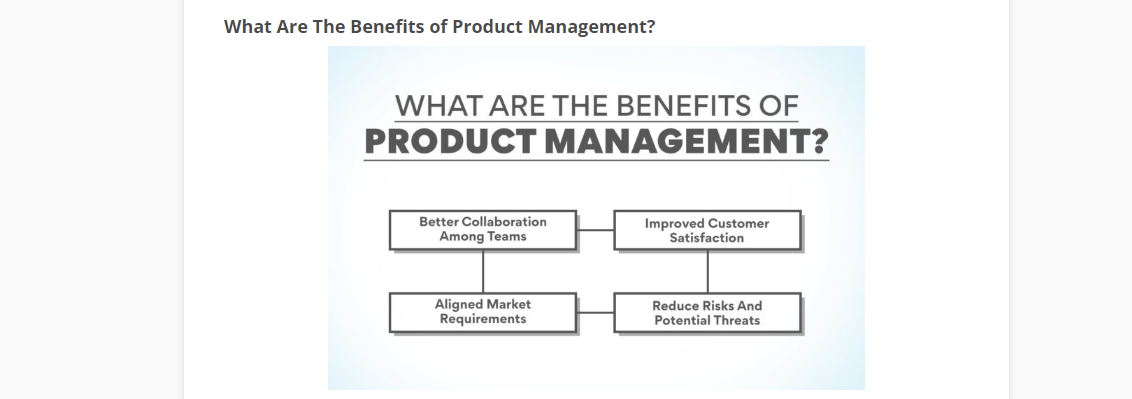
Ability to Optimize Existing Products
Building on the advantages of project management, product management brings the added benefit of being able to optimize existing products. This type of management allows for different departments to collaborate to understand customer behaviors and trends and use this information to make changes and improvements to existing products, services, and strategies. With this data, product managers can collaborate with product teams to efficiently create products that are tailored to customers’ needs and wants.
Using customer feedback and data, product managers can optimize the customer experience and journey, and use the data to make changes that will maximize the performance of existing products. This includes making changes to the product’s features, design, pricing, and marketing. For example, if customer feedback suggests that customers did not like the color of a product, the product manager can adjust the product’s design to accommodate the customer’s preferences. Product optimization can help a company increase sales and customer satisfaction, and even create a competitive advantage for the business.
Ability to Monitor Performance
Transitioning from the advantages of project management, product management offers its own set of benefits that are worth exploring. One of the advantages of product management is the ability to monitor performance. This ability helps product managers track and observe the lifecycle of a product, from its introduction to the market all the way to its end-of-life.
Product managers can use market research and analytics to understand how a product is performing. Through this monitoring, they can identify areas of improvement and make changes accordingly. With performance monitoring, product managers can adjust their strategies to better align with the customer’s needs and industry trends. This way, they can ensure the product remains competitive and up-to-date. Product performance can also be monitored in terms of customer feedback and satisfaction. Product managers can use customer surveys and reviews to determine the usability, feasibility and appeal of a product. This information can then be used to make further improvements and modifications for the betterment of the product.
Cross-Functional Collaboration
Building off the advantages of project management, product management also offers a variety of benefits. One of the most significant advantages of product management is the ability to facilitate cross-functional collaboration. By creating a collaborative framework, product managers can bring together teams from different departments to work on a common goal.
When different teams come together, it can be difficult to ensure everyone is on the same page. Product managers can help to streamline the process by creating a clear communication plan with set expectations. They can also ensure that all team members are aware of their individual roles and responsibilities. This helps to create a more efficient and productive environment.
Benefits of Combining Project and Product Management
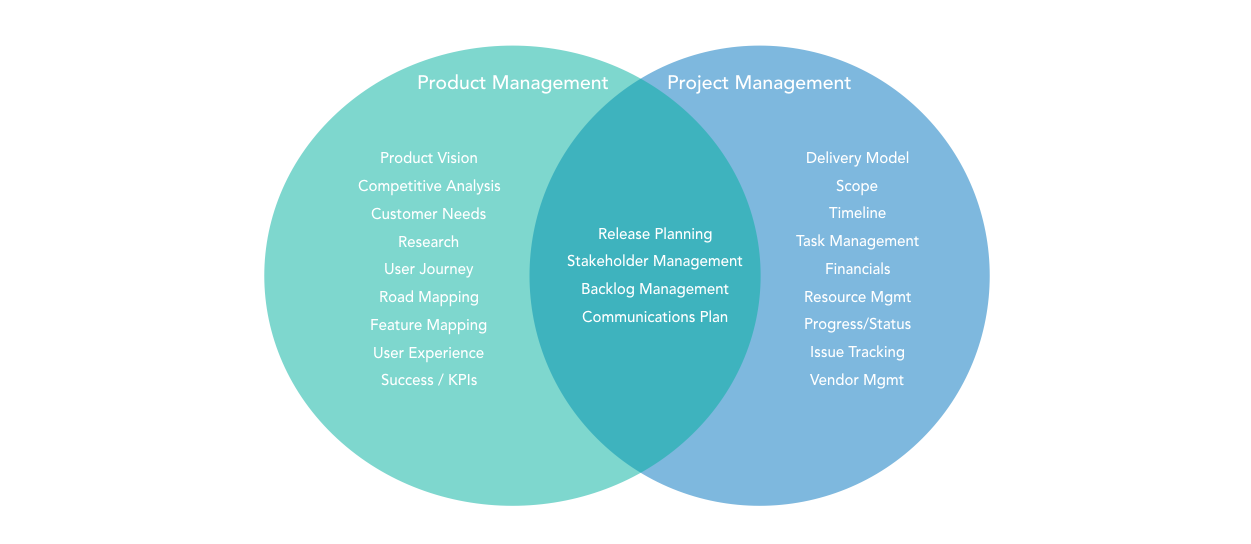
Ability to Create Quality Products
By combining the fields of project and product management, companies gain the ability to create high-quality products with greater efficiency. With the help of the project manager, resources can be better allocated to ensure that the product is created with the highest standards of quality in mind. The project manager works alongside the product manager to ensure that the development process is organized and managed in a way that results in a product that meets the company’s goals.
The project manager is responsible for ensuring that the development process follows the guidelines that have been established for the product to be successful. This includes ensuring that the product is built according to the timeline and budget established, as well as ensuring that the product is tested and meets the company’s standards of quality. By combining the expertise of both the project and product manager, companies are able to create products that meet their high standards of quality while still being able to maintain a high level of efficiency in the development process.
Ability to Consolidate Resources
By combining project and product management, organizations are able to reap the benefits of consolidating resources. This is done by streamlining processes and creating a singular vision for projects and products that unifies all stakeholders. This approach allows for a single source of truth to be accessible for stakeholders to refer to, rather than relying on multiple sources to provide the same information. By having one source of truth, the amount of duplicated work is reduced, as there is only one document or resource that needs to be updated and shared.
Further, consolidating resources allows for a clearer understanding of the project or product from a holistic standpoint. By having fewer resources for stakeholders to refer to, it is easier to assess progress and identify areas of improvement. This enables teams to make more informed decisions, resulting in a higher-quality product. Consolidating resources also helps to ensure that everyone is on the same page and working towards the same end goal. This eliminates any confusion or overlapping work that would otherwise result if each team had its own source of information.
Increased team productivity
By combining project and product management, teams are better able to increase their productivity. As project managers and product managers join forces, teams are able to look at the big picture, identify the most important tasks, and efficiently work towards those goals. With this combination, teams are able to provide the necessary structure to ensure tasks are completed on time, while also allowing for some flexibility when needed.
Project and product managers also have the ability to effectively delegate and manage tasks, allowing teams to focus their energy on the most important tasks that will lead to the best outcomes. The combination of project and product management also allows teams to evaluate their progress, make adjustments, and adjust their timelines to ensure they are staying on track. This allows teams to make progress efficiently and in a timely manner, ensuring they are able to reach their goals.
Competitive Advantages of Utilizing Project and Product Management
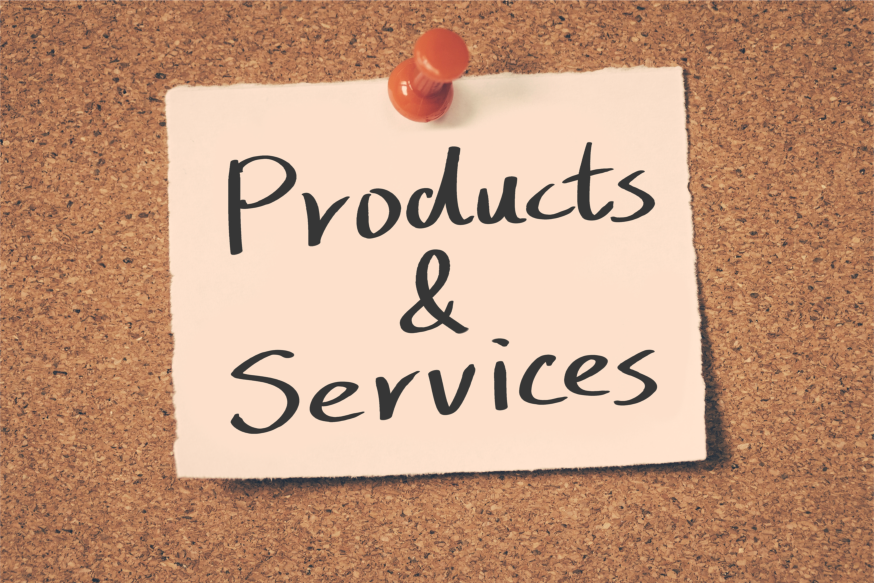
Improved Quality of Products and Services
By combining project and product management, organizations are able to achieve an improved quality of products and services. This is due to the fact that project and product managers are able to take a holistic approach to the development of products and services. By taking this kind of approach, they can identify areas of improvement, as well as the various aspects that need to be addressed to ensure that the quality of the product or service is the best it can be.
Increased Customer Satisfaction
Harnessing the power of project and product management can lead to increased customer satisfaction, providing an undeniable competitive advantage for any business. By utilizing project and product management tools, businesses can ensure that their products and services are of the highest quality, giving customers a reason to remain loyal. This can be achieved through improved collaboration, communication, and resource allocation, ensuring that nothing falls through the cracks and that customers are always satisfied with their experience.
Time Management

In addition to improved quality of products and services and increased customer satisfaction, the combination of project and product management offers further competitive advantages in the form of improved time management. By combining the two disciplines, the development process can be streamlined, allowing for tasks to be completed more quickly and efficiently. This enables teams to deliver projects on time, with fewer delays and less stress.
Moreover, the combination of project and product management improves the quality of the product itself by speeding up the process of product development. As a result, the product can be released sooner, increasing customer satisfaction and providing a competitive edge over competitors. Furthermore, the combination of project and product management facilitates the efficient use of resources with better time management, leading to cost savings and improved profitability.
Conclusion
Project and product management both play an important role in businesses. While project management focuses on the completion of specific tasks, product management is concerned with the development and success of a product or service. By combining the two, businesses can maximize the potential of their products and achieve better results. By utilizing project and product management, businesses can gain competitive advantages and realize increased profits. The benefits of combining both project and product management are clear, and businesses should take advantage of them.
In conclusion, understanding the fundamental differences between product management and project management is crucial for the efficiency and success of your business. But, navigating these concepts and applying them practically can be a daunting task. This is where Ubique Digital Solutions comes in. With our comprehensive knowledge and expertise, we ensure these management disciplines work in harmony to drive your business toward its goals. We invite you to take the next step in your business journey by partnering with us. Contact us today and let’s start building the future of your business together.
FAQs
Q: What is product management?
Product management is the practice of strategically driving the development, market launch, and continual support and improvement of a company’s products.
Q: What is project management?
Project management is the application of processes, methods, skills, knowledge, and experience to achieve specific project objectives according to the project acceptance criteria within agreed parameters.
Q: How do product management and project management differ?
Product management focuses on the product’s lifecycle, from idea to development, to market introduction, and beyond. Project management, on the other hand, deals with specific projects with defined objectives, set start and end dates, and deliverables.
Q: Can one person handle both product and project management roles?
While it’s possible, it can be challenging because each role requires different skill sets and responsibilities. Generally, it’s recommended to have separate individuals handling these roles for more effective management.
